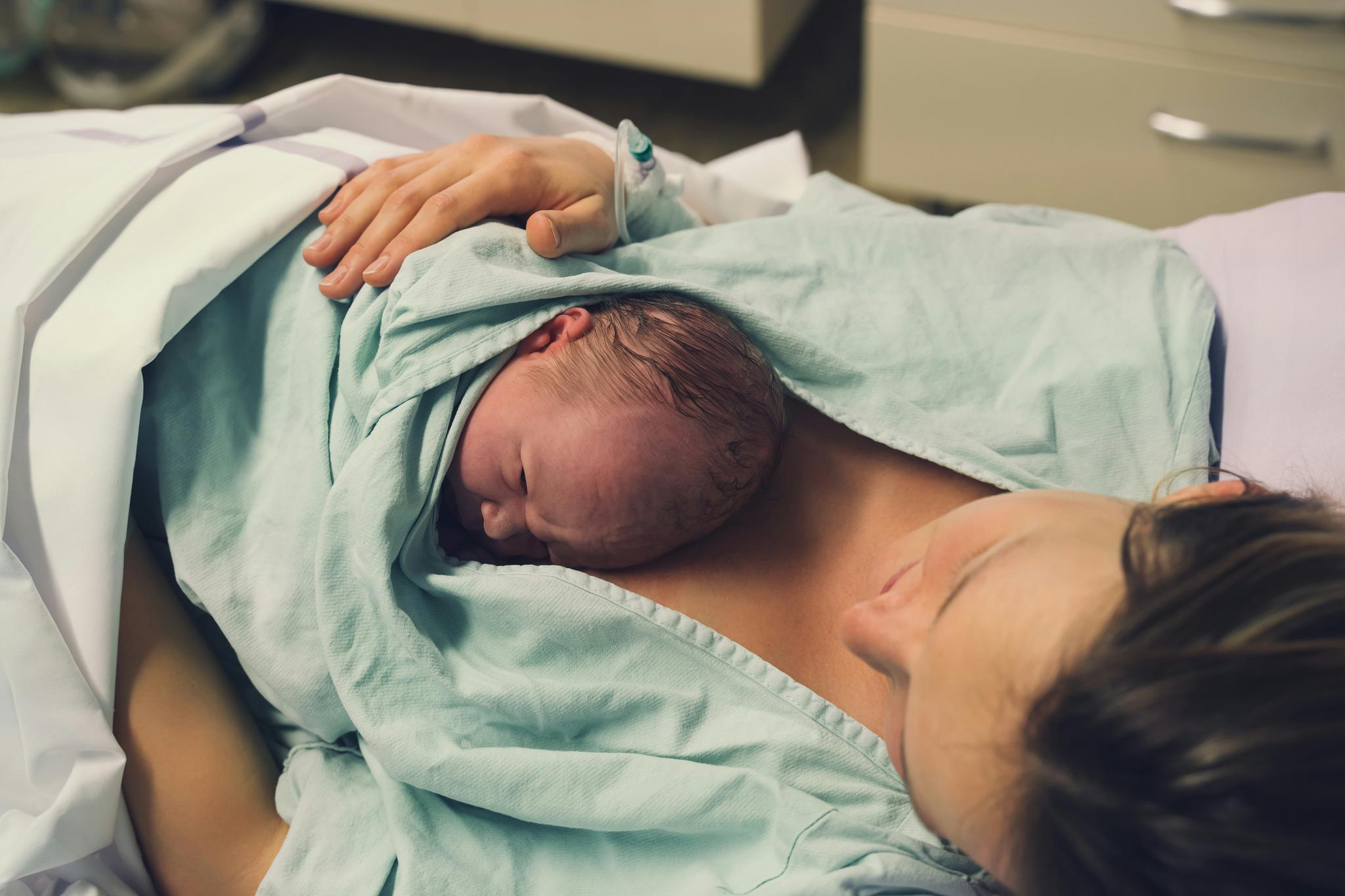Birth Stages
Last updated
First published

How is the pain? When do you know that the birth is underway? As an expectant mother and parent, it is only natural to be curious about how the birth will take place and how painful it is going to be. However, all deliveries are unique and have an individual course.
However, what can be said with certainty is that birth can be divided into four different phases: the latent phase, the active phase, the transition phase, and the press phase. However, it will not feel like separate phases but instead like a sliding process as the birth progresses, and the labor pains become more intense.
Birth begins with the latent phase
The latent phase typically begins with menstrual-like pain or that pain sits in front of or over the lower back. Plucking pains and actual pains are difficult to distinguish between.
In this phase, the contractions come with great irregularity and are also short, even with breaks where the contractions disappear. In other cases, the contractions can be both frequent and intense but still only 20-40 seconds in length.
Finally, the cervix becomes shorter and more available (3-4 centimeters). If you are giving birth for the first time, the latent phase is longer than if you have given birth before. Therefore, the contractions can be left on for 9-20 hours before entering the next step.
You expand in the active phase
When you enter the active phase, you are actually at the beginning of the birth. This is where the cervix opens more and more, and your contractions become more powerful and more extended at 4-5 minute intervals. If the amniotic fluid has not already passed, it is widespread to happen here.
It can be experienced as very painful and requires total concentration so that you can relax between contractions. If you are still at home, it is at this point that you should contact the delivery room. At the end of the phase, you may become very frustrated and irritated because the pain feels unmanageable and unpleasant, perfectly okay and normal.
The urge to press arises in the transition phase
In the transition phase, the cervix has opened completely. It is also here that the baby's head begins to move further down towards the pelvic floor. It gives you a more incredible urge to squeeze because the head presses against the rectum.
The contractions usually also become both more robust and longer. However, you may also find that there are longer breaks between contractions, which allows you to recover a little before the press phase starts.
The pressing phase - the baby is born
The acute phase begins when the cervix is completely open, and the baby's head has also been pushed down on the pelvic floor. It gives you a strong urge to push. However, it is first something you need to have the green light for from the midwife, who first examines whether it is about to be time.
The acute phase is the hardest part of the birth as it requires a lot of you to squeeze a baby out. If you are giving birth for the first time, it generally takes longer to push the baby out than if you have given birth before.
When the baby's head is pushed out through the vaginal opening in the last part of the phase, it will feel very tense. It requires good breathing, which you get help from the midwife. During the birth of the baby's head, the midwife supports your crotch and the baby's head, as it is more likely to spare you from ruptures and tears.
The body will be born immediately after in the next woe.
The placenta is born
When the baby is born, the placenta must detach and be squeezed out as the last. It can feel like a woe that is on the way as the uterus contracts. The midwife keeps an eye on it and notices when to squeeze the placenta out.
It is as painful as the press work you have just been through. When it slides out through the vagina, it may well sting and tense a bit. Then the midwife marks the abdomen to check if the uterus has contracted as it should and if the whole placenta has come out.
It all ends with the midwife examining the abdomen, who sews any ruptures. Then you have to take a shower, change into clean clothes and enjoy the wonder that has just come into the world.
Contents
